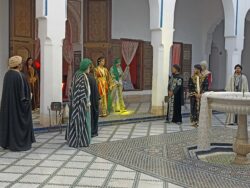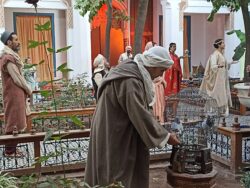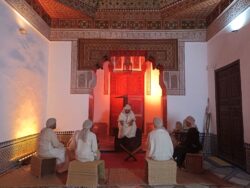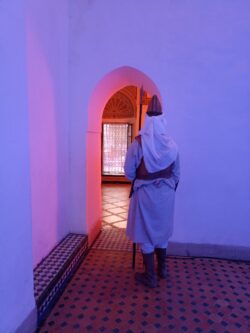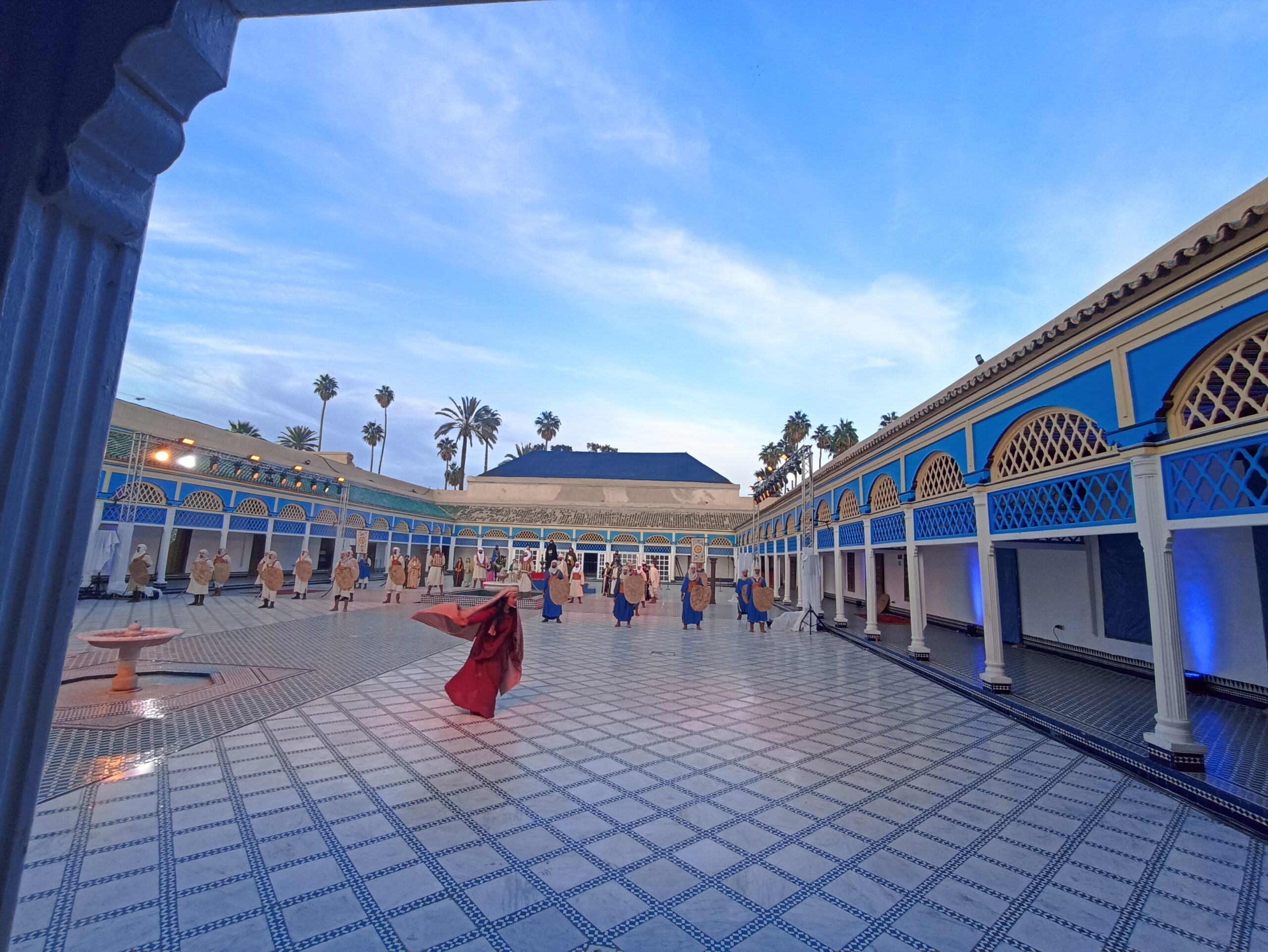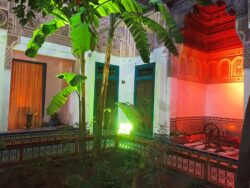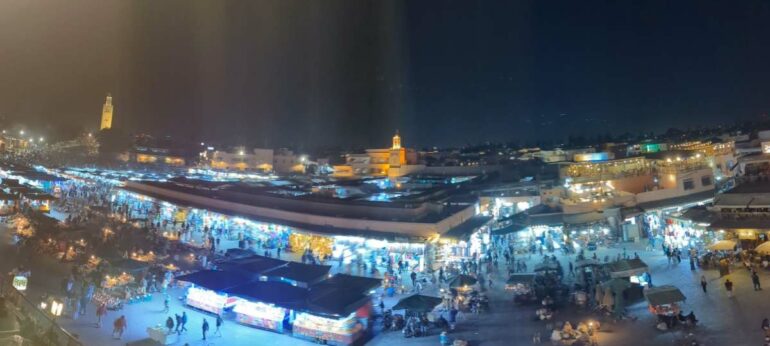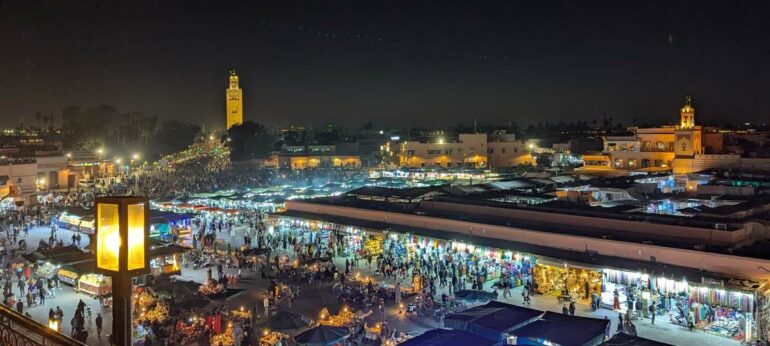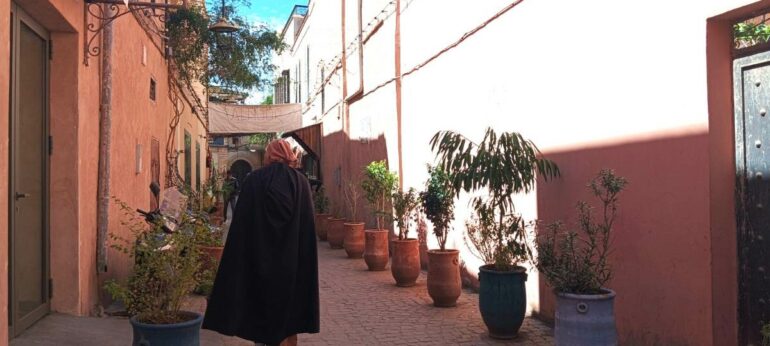“Bahia”
The beautiful, the magnificent, the brilliant, the radiant…The list of these words evoking grace and beauty could be longer. Let us choose the “Bahiya”.
It is doubtless that the Grand Vizier’s favourite was a woman of an incomparable beauty. That is why Ahmed Ben Moussa (1841-1900) dedicated his Palace to her. She probably had to fight a great deal in order to find her right place among four official wives and 24 concubines from the harem. Not to mention the countless children who were playing in the gardens ans courtyards. No one knows her true name… From her it remains this scent of mystery, and also this love she inspired, this adoration a mighty man could feel. For her, he has embellished his Palace where her soul still floats.
Myth or reality? Who cares! Over time, the legend has won and everyone loves it.

Ahmed Si Moussa
Vizier Ahmed Si Moussa has been described as a “black, short and obese man”. Between 1894 and 1900, date of his death, he actually ruled Morocco after having enthroned as a Sultan his young nephew. Unlike his lover, he did not really shine. He made bad choices and plunged the country into harmful situations and financial crisis. That made Morocco become more dependant on imperialist countries like France, Spain, united Kingdom.
So the history will retain of him his sentimental journey, his quest for an ideal of love.
Willing to impress his Beauty, he decided to considerably expand the palace, which his father, the Grand Vizier Si Moussa, had erected in an area south-east of the Marrakech medina.
To finalize this extension on 20 acres, Ahmed Si Moussa uses the best artisans of his time to enhance the successive courtyards, patios, rooms and lounges, gardens…
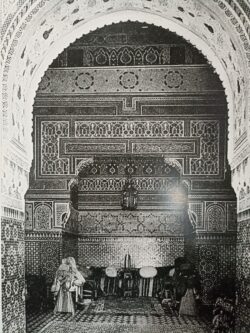
On the walls, the grounds, the ceilings, the cedar-wood, zelliges, Carrare marbles, stuccos, mashrabiyyas, Iraqi stained-glass windows respond to eachother, creating a spectacular symphony in the Palace. In the lush gardens and ochards, the fragrances combine, coming from lemon trees, orange trees, date palms, jacarandas, nocturnal mesc-el-lil, palm trees, jasmines, hibiscus…
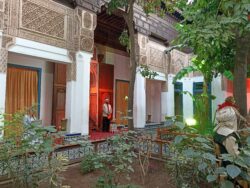
Actually, he added a bit of confusion to the original plans of the Palace. In creating a lot of new spaces, the ensemble of 150 rooms becomes a labyrinth.
A metaphor of the meanders of the Vizier’s heart, of his love convolutions?
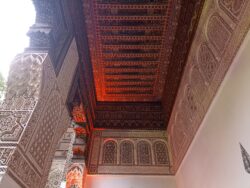
Si Moussa
He is Ahmed Si Moussa’s father. He was descended from a family of black slaves which served the Moroccan government and reached the highest offices in the country. He is the one who actually decided the construction of the building in the 1860s. Si Moussa was The Grand Vizier of the Sultan Hassan I. This one belongs to the Alaouite dynasty and is the ancestor of the presently ruling monarch, His Majesty the King Mohammed VI. He chose to establish his residence near the Agdal gardens, in Riad Zitoun Jdid area, near the Mellah, near the ruins of the Badii Palace and the Kasbah. The main square Jemaa el Fna and the Koutoubia Mosk are also in the neighborhood.
He hires the architect Si Mohammed El Mekki (1857-1926). The layout of this first architectural ensemble is now the oldest part of the Palace.
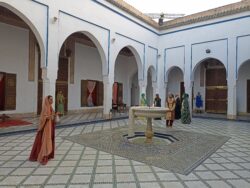
It seems to be more meticulous and orderly than the imbroglio of the more recent expansions.
The Grand Courtyard, Grande Cour d’Honneur in French, dates from this first period. It is absolutely spectacular because of its huge dimensions (50m by 30m), its layout and its italian style which can surprise the visitor. It is paved with Italian Carrara marble and surrounded by a colourful wooden gallery with elegant columns. The amazing colonnade breaks the Moorish style, the oriental unity of the general decoration. These galleries give access to some 80 rooms which are believed to have been part of Ahmed’s harem and the residences of his concubines. At the east end of this courtyard is a grand hall, Salle d’Honneur in French. An inscription dates the construction of this chamber to 1896-1897, which was probably the last major expansion of the palace. Maybe the wives and the children used to gather here and hide somewhere behind the mashrabiyya panels when visitors came to attend meeetings.
Portrait of Vizier Si Moussa
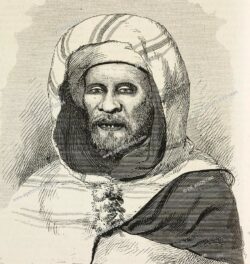
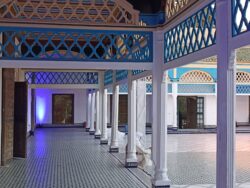
The Lyautey years
After Ahmed Si Moussa’s death, under the reign of the young Sultan Abd al-Aziz (1878-1943), the palace was looted . Probably the servants , wives and concubines wanted to take away souvenirs of their happiest times ?
With the French Protectorate, the Maréchal Lyautey, General Resident of France in Morocco, came for a first visit in Marrakech, discovered the Bahia Palace and decided to establish his residence there with a few other army officers. He uses his private apartments for his escapades in the city. It is said that he liked to arrive unexpectedly. When he mentions his chambers, decorated in the English style, he says his “home”. He has the electricity installed, as well as a heating system and a few fireplaces. Lyautey and his troops occupy what we call the Petit Riad. In his office he studies the development project of the new city, the Gueliz, which is in the hands of Henri Prost from 1913. He also follows the remediation works in the old medina, its restoration and its mapping. Many monuments, such as the city walls or the Koutoubia Mosque, are cleaned. Some others like the Saadian tombs are excavated. He welcomes the Glaoui, the Caïd, and a few other friends or personalities. Maréchal Lyautey would feed a passion with respect for Moroccan culture, history, heritage, arts and handicrafts. He played an essential role as a protector of the historical sites. He decided to open the Bahia Palace to the public and largely contributed to its international reputation. He devoted 12 years of his life to the Cherifian Kingdom which he adored. Even after he went definitively back to France and until his last breath, on July 27th 1934, Morocco never left his heart and spirit!
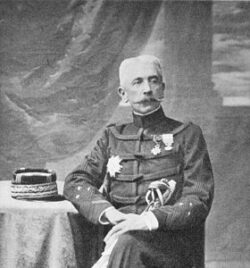
Cinema
In 1964, the movie directed by Henri Verneuil “Greed in the sun” celebrates in a way the Bahia Palace. A very famous scene is shot in the Grand Courtyard. Jean-Paul Belmondo and Lino Ventura fiercely fight around the central fountain. While blows rain down, Bernard Blier is having fun with six beautiful creatures in one of the numerous adjacent chambers. As Ventura bursts into the room, Blier says : ” Oh stop it! I deserve a private life! Go play in your courtyard, my kid” Dialogues by Michel Audiard, of course!
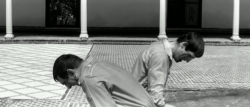
Bring the Bahia Palace to life!
